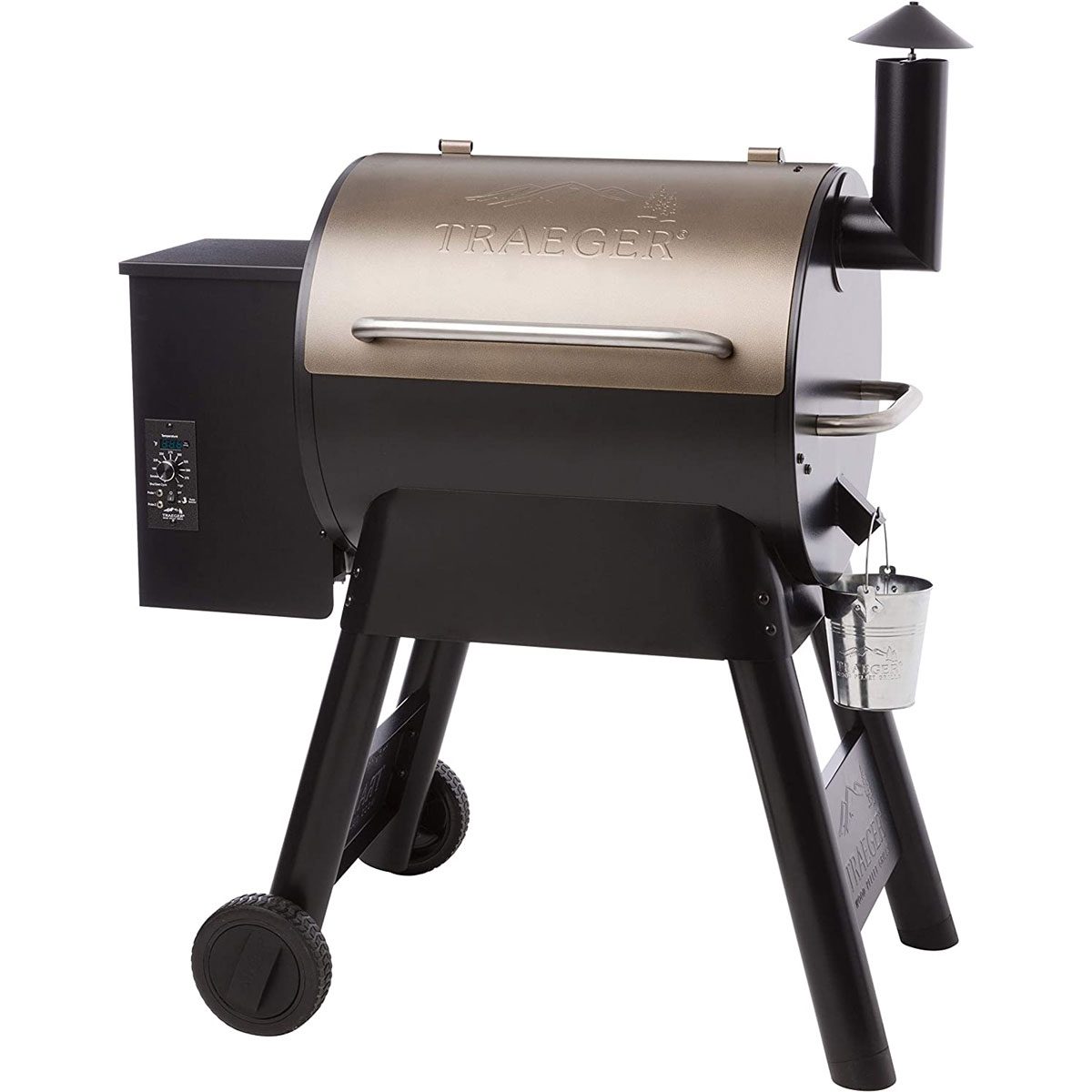Trying to decide between pellet and gas grills? Take a look at our comparison to find out which one is the best fit for you.
Our editors and experts handpick every product we feature. We may earn a commission from your purchases.Learn more.


Trying to decide between pellet and gas grills? Take a look at our comparison to find out which one is the best fit for you.
Our editors and experts handpick every product we feature. We may earn a commission from your purchases.Learn more.
Gas grills have been around for a while. Pellet grills, a.k.a. pellet smokers, are a more recent innovation. Both provide grillers the ease of use and versatility prized in backyard cookers. However, there are key differences to consider when choosing between them.
On This Page
They’re easy to start. All you do is fill the hopper with pellets, set your target temperature, push a button and you’re cooking. Pellet grills also reach the target temperature quickly and maintain it throughout the cook.
They’re versatile. You can bake, roast, smoke and grill with your pellet grill. However, some pellet grills have trouble reaching higher temperature ranges like 450 to 500 F for searing.
They provide great smoky flavor. As their name suggests, these grills are fueled by smoking pellets, which are essentially compressed wood sawdust. So they impart a distinct flavor to your food. Keep in mind that different pellets have different flavor profiles based on the wood they use, so you have options to experiment with. Here are a few tips for cleaning your pellet grill.
If you’re not a winter griller, here’s how to prepare a pellet grill or smoker so it’s ready in spring.
Getting pellets. With gas grills, you can head down to any gas station or local hardware store and exchange your spent propane tank for a fresh one. With pellet grills, you need to go to a barbecue specialty store to buy pellets or order online. Related: Beware of heating pellets. They aren’t food grade or suitable for cooking.
You need an outlet. Pellet grills use electricity to power an ignition rod, which lights the pellets to create heat and smoke, making them less portable than gas grills.
They are expensive. An entry-level pellet grill can cost up to $500.
They’re easy to operate. Turn a knob and you’re ready to grill. That same easy action also adjusts the temperature of the grill to your liking.
They can reach higher temperatures. A high-quality gas grill can reach 700 F, no problem at all. Because of that, gas grills are great for searing steaks and other meats.
Gas grills are affordable. Gas grills run from $100 for a portable one up to $3,000 for a high-end model. (Remember, the more expensive a gas grill is, the more features it has — and vice versa.) Gas is also cheap and readily available.
They aren’t great at smoking. Gas grills need good ventilation to function well. That leads to inefficient heat retention, which limits their ability to maintain a low temperature range.
Flavor can be lacking. Gas is tasteless and can’t impart any flavor on its own, like pellets or charcoal. Sure, you can add some wood chips when cooking with a gas grill, but the flavor isn’t as strong as with a pellet grill.
Safety concerns. Leaks in your gas grill and the potential for wind to blow out the flame while the gas is still pumping are potential fire dangers — we’ve all heard disaster stories about leaky gas grills.
Pellet and gas grills are great cookers that can turn out amazing food. To know which is the right choice for you, you need to weigh cost, ease of use, cooking style and any safety concerns.
Go with a pellet grill if price is no object and your goal is to smoke meat low and slow, infusing it with incredible smokey goodness.
Gas grills are a better choice if you’d prefer a low-cost, straightforward, potentially portable option, and prize high heat for searing over smoky wood flavor.